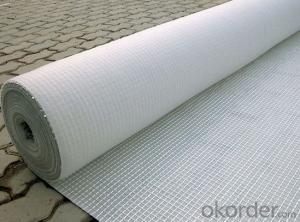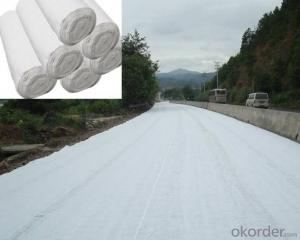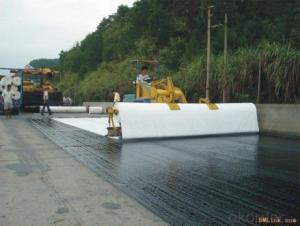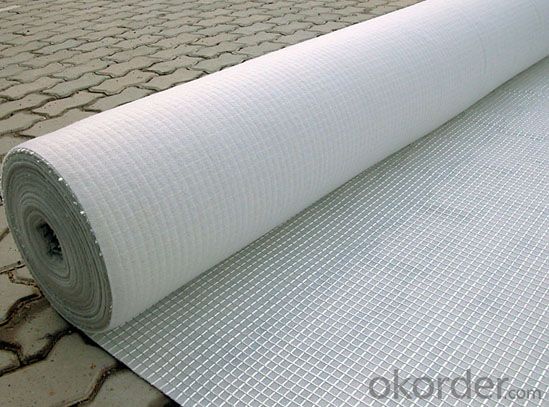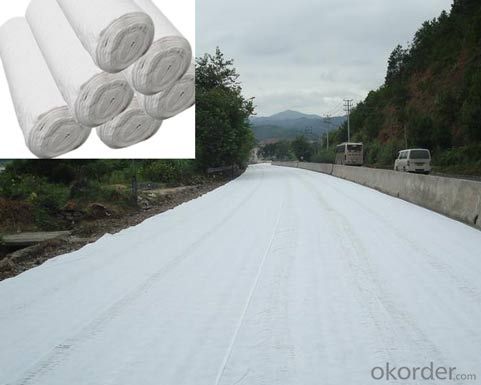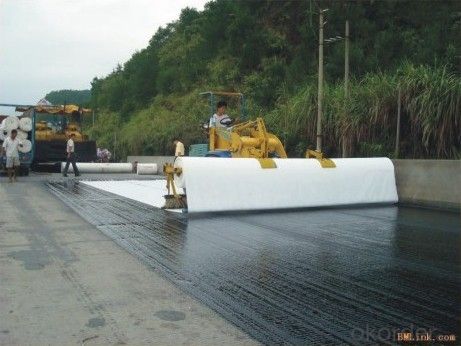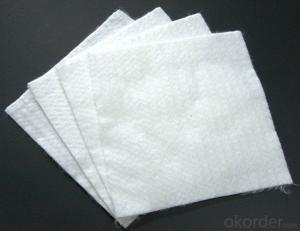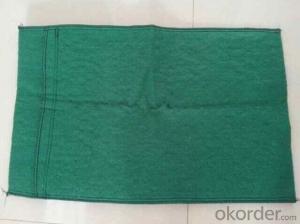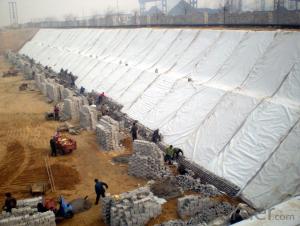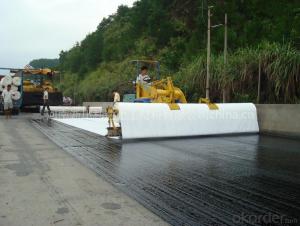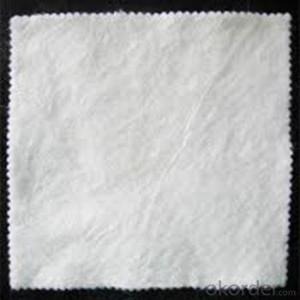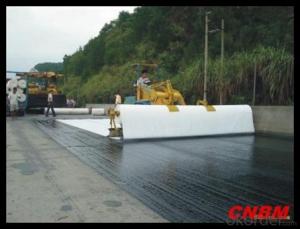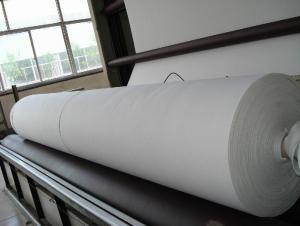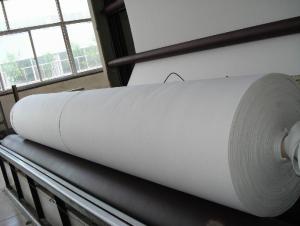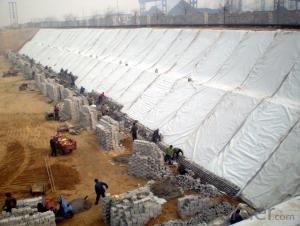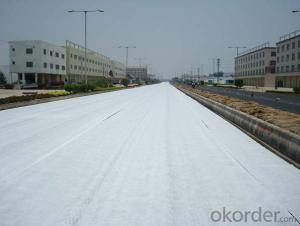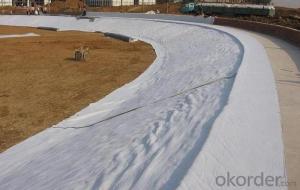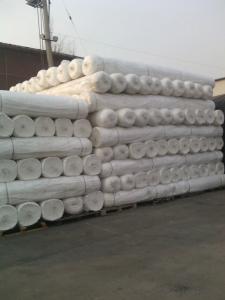Geotextile Castorama Short Fiber Non Woven Geotextile for Construction
- Loading Port:
- Qingdao
- Payment Terms:
- TT OR LC
- Min Order Qty:
- 1000 m²
- Supply Capability:
- 600000 m²/month
OKorder Service Pledge
OKorder Financial Service
You Might Also Like
Introduction of Geotextile
Good flexibility, permeability, filtration, sepatation and easy for construction.
Application of Geotextile
CMAX Geotextile has excellent permeability, acquired, durablity, which can be widely used in railway, highway, movement hall, dams, hydraulic structures, hence hole, coastal shoal,reclamation, environmental protection and other projects.
The main products are Synthetic staple fibers needlepunched non woven geotextiles and slit and split film yarn woven geotextiles.
Specifications:100GSM-1500GSM
length:50m-100m
width:1m-8m
material:100%PET
Packaging Details: pp woven bags or at your request
Delivery Detail: 15 days
Technical Specification
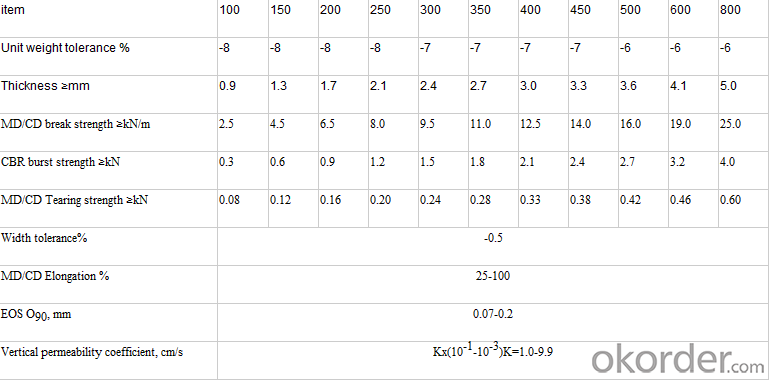
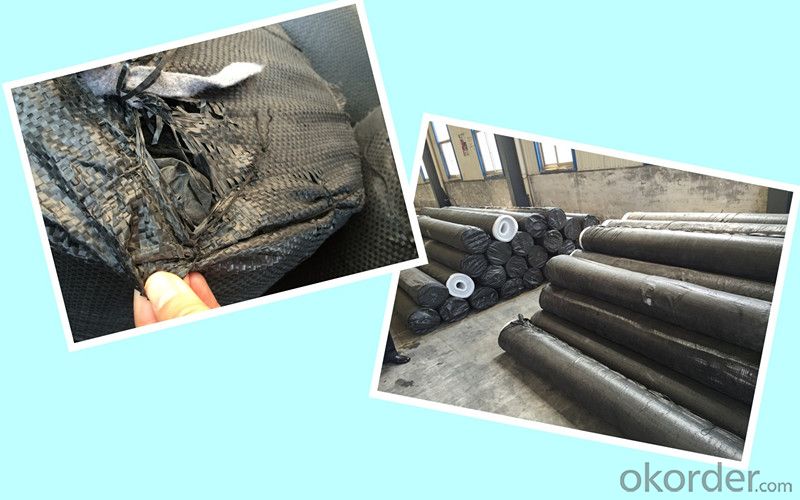
FAQ
Q: What kind of payments does jenor support?
A: T/T, L/C, Cash are accepted.
Q: Do you charge for the samples?
A: Accordeing to our company policy, the samples are freee, we only charge the freight fee. And we will return the freight fee during the next order.
Q: Can you produce according to customers' design?
A: Sure, we are professional manufacturer, OEM and ODM are both welcome.
Q: Do you have other products?
A: Yes, please check the pictures:
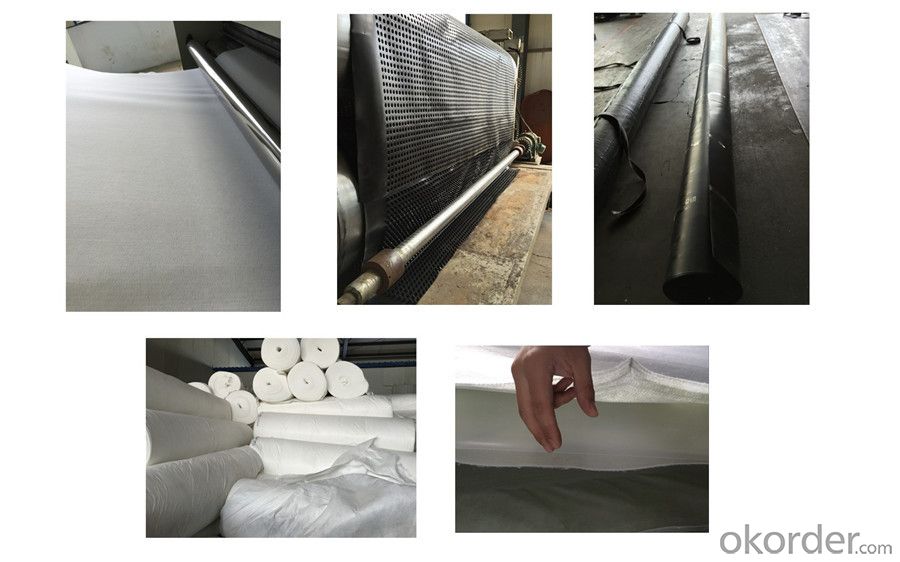
- Q: What are the different geotextile testing methods?
- There are several different geotextile testing methods, including but not limited to, grab tensile strength testing, puncture resistance testing, tear resistance testing, burst strength testing, and permeability testing. These methods help assess the physical properties and performance of geotextiles in various applications.
- Q: Application standard of filament geotextile
- National standard for filament geotextiles GB / T-1998 Geosynthetics Filament anti - sticking acupuncture non - woven geotextiles, the latest standard GB / T - 2008.
- Q: Construction Method of Sand and Gravel Cushion on Slope Soil Geotextile
- Online to find some relevant construction methods, Google library on a lot. After downloading, modify, targeted to add that is the slope of geotextile sand and gravel cushion construction method.
- Q: Geotextile gbt-2008.200g / m2 test standard value
- GB / T-2008 is the national executive standard for filament woven geotextile. 200g / ㎡ of the filament woven geotextile warp rupture strength ≥ 50KN / m, zonal rupture strength of the rupture strength of 0.7-1.0 times the elongation at break ≤ 35% weft ≤ 30% , The width of the deviation of -1.0%, CBR breaking strength ≥ 4.0KN, the equivalent aperture O900.07-0.5mm, the vertical permeability coefficient (1.0 ~ 9.9) × (10 negative square ~ 10 negative five times), tear Breaking strength ≥ 0.8KN, irrigation thickness deviation of ± 8%, length and width deviation of ± 2%, sewing strength ≥ breaking strength × 50% KN / m, which irrigation thickness deviation, length and width deviation, sewing strength only on the mold Bag cloth assessment. Under the GB / T-2008 GB standard.
- Q: How do geotextiles affect air quality?
- Geotextiles do not directly affect air quality. However, they can indirectly contribute to improved air quality by preventing soil erosion and reducing the release of dust particles into the air.
- Q: How do geotextiles help with vegetation establishment?
- Geotextiles help with vegetation establishment by providing a stable and favorable environment for plant growth. They prevent erosion by holding soil in place, allowing roots to establish and anchor the vegetation. Geotextiles also retain moisture and regulate soil temperature, promoting optimal conditions for seed germination and plant growth. Additionally, they protect young plants from weed competition, herbicide leaching, and wildlife damage, ultimately enhancing the success of vegetation establishment.
- Q: Will geotextiles generally use where?
- Geotextile applications (1) Reinforcement in backfill for retaining walls, or panels for anchoring retaining walls. Building a parcel or retaining bridge. (2) to reinforce the flexible road surface, repair the cracks on the road, to prevent the road reflection cracks. (3) to increase the stability of gravel slope and reinforced soil to prevent soil erosion and low temperature soil damage. (4) the separation between the road ballast and the roadbed, or the isolation between the roadbed and the soft foundation. (5) artificial fill, rock or material field and the isolation layer of the foundation, the separation between different frozen soil layer. Anti-filtration and reinforcement. (6) ash filter or tailings dam early upstream of the dam surface filter, retaining wall backfill drainage system filter layer. (7) drainage around the tube or gravel drainage ditch around the filter layer. (8) Water conservancy works in the wells, relief wells or diagonal pipe filter layer. (9) Isolation of geotextiles between roads, airports, railways and artificial rockfill and foundations. (10) internal or horizontal drainage of the dam, buried in the soil to dissipate the gap water pressure. (11) Drainage of the bottom of the impervious geomembrane or the lower part of the concrete face in the earth dam or embankment. (12) to exclude the surrounding water seepage of the tunnel, to reduce the external pressure of the lining and the surrounding water infiltration. (13) Drainage of Foundation of Artificial Filling Ground. (14) roads (including temporary roads) railways, embankments, earth dams, airports, sports and other projects to strengthen the weak foundation.
- Q: In the cofferdam construction process, geotextile materials after entering the need to arrange sampling test? Is there a specification? If the arrangements for testing, is to do physical experiments, or do chemical experiments, or do? More
- On the use of geotextile material, depending on whether the design requirements on the use of drawings, if required to use the method must be taken in the sampling inspection, the most commonly used two geotextiles GB / T-2008 is filament spunbond acupuncture Non-woven geotextile, GB / T-1998 is staple acupuncture non-woven geotextile, the general arrangements for testing are to do physical and mechanical properties (dynamic perforation, per unit area of quality, thickness, wide strip stretch, trapezoidal tear) other indicators Not mandatory
- Q: Do geotextiles require regular maintenance?
- Yes, geotextiles generally require regular maintenance to ensure their effectiveness and longevity. This may include inspecting for any damage or wear, removing any debris or vegetation that may accumulate on the surface, and addressing any soil erosion or drainage issues that may arise. Regular maintenance helps to preserve the integrity and functionality of geotextiles in various applications such as erosion control, filtration, and stabilization.
- Q: What are the primary applications of geotextiles?
- Geotextiles are primarily used in civil engineering and construction projects for applications such as soil stabilization, erosion control, filtration, drainage, and reinforcement of soils. They can also be used in environmental projects, agriculture, and transportation infrastructure.
Send your message to us
Geotextile Castorama Short Fiber Non Woven Geotextile for Construction
- Loading Port:
- Qingdao
- Payment Terms:
- TT OR LC
- Min Order Qty:
- 1000 m²
- Supply Capability:
- 600000 m²/month
OKorder Service Pledge
OKorder Financial Service
Similar products
Hot products
Hot Searches
Related keywords
